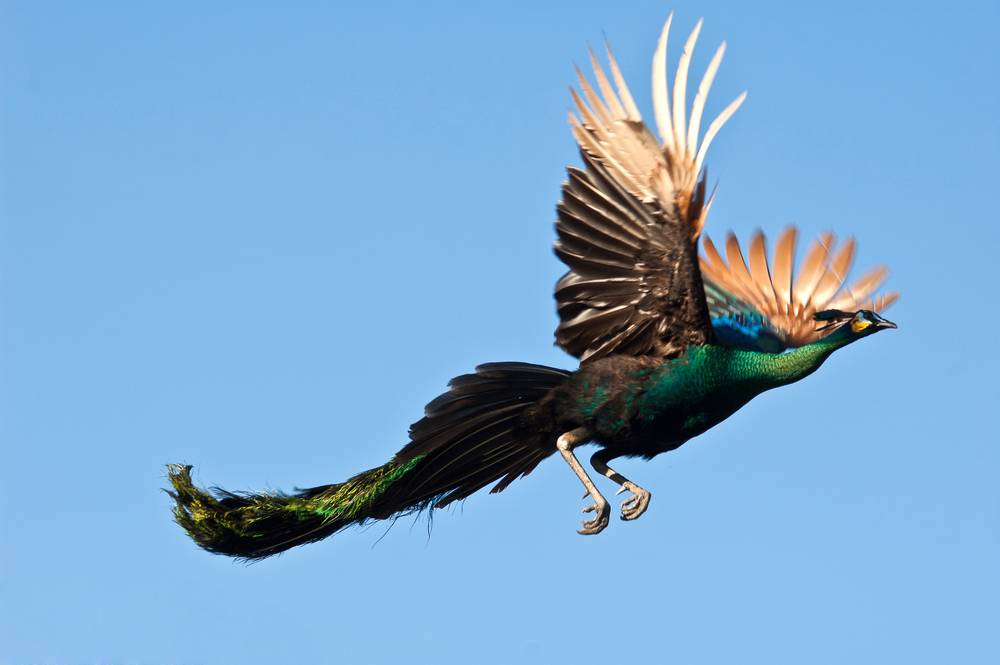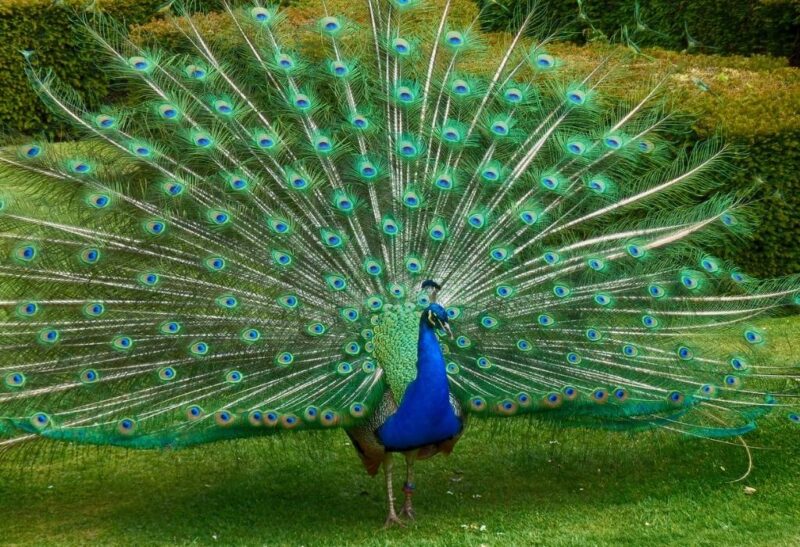Peacocks, known for their stunning plumage and vibrant colors, are often seen strutting around on land, but can they actually fly? This article explores the intriguing question: do peacocks fly? Discover their flying abilities, behavior, and other fascinating facts about these majestic creatures.
Peacocks have long captured the imagination of people worldwide due to their breathtaking beauty and elegance. However, their ability to take to the skies is often questioned, leading many to wonder whether these birds are capable of flight. The answer might surprise you, as peacocks possess more aerial prowess than one might initially assume.
In this comprehensive guide, we will delve into the world of peacocks, uncovering their flying capabilities, habits, and other interesting aspects of their lives. By the end of this article, you will have a deeper understanding of these remarkable birds and their place in the animal kingdom.
Read also:Sophie Rain Spiderman Explained Unveiling The Mystery Behind The Viral Sensation
Table of Contents
- Biological Overview of Peacocks
- Do Peacocks Fly?
- Why Do Peacocks Fly?
- How High Can Peacocks Fly?
- Flight Mechanics of Peacocks
- Common Misconceptions About Peacock Flight
- Habitat and Environment
- Diet and Nutrition
- Conservation Status
- Fascinating Facts About Peacocks
Biological Overview of Peacocks
Peacocks, scientifically known as Pavo cristatus, are part of the pheasant family and are native to the Indian subcontinent. They are renowned for their iridescent feathers and elaborate courtship displays. Despite their large size and heavy plumage, peacocks are capable of flight, though it is not their primary mode of transportation.
Physical Characteristics
Peacocks possess a unique set of physical traits that contribute to their ability to fly. Their wings, though relatively small compared to their body size, are strong enough to lift them off the ground. Additionally, their lightweight bones and powerful muscles aid in their aerial endeavors.
Do Peacocks Fly?
Yes, peacocks can fly, contrary to popular belief. While they are not built for long-distance or sustained flight, they are capable of short bursts of flight to escape danger or reach elevated perches. This ability is crucial for their survival in the wild.
Flight Patterns
The flight patterns of peacocks are characterized by short, rapid bursts of movement. They typically fly in a zigzag pattern, which helps them evade predators. Their flight is not as graceful as that of other birds, but it is effective for their needs.
Why Do Peacocks Fly?
Peacocks fly primarily for safety and accessibility. By taking to the skies, they can escape ground-dwelling predators and reach higher vantage points for roosting or resting. Additionally, flying allows them to navigate their environment more efficiently, especially in dense forests or hilly terrains.
- Escape predators such as leopards, tigers, and large snakes.
- Reach safe perches for roosting at night.
- Move between trees and other elevated areas.
How High Can Peacocks Fly?
Peacocks can fly to heights of up to 30 feet (9 meters) above the ground. While this may not seem impressive compared to other birds, it is sufficient for their purposes. Their ability to reach these heights allows them to access tree branches and other elevated areas for safety and rest.
Read also:Is Richard E Grant Related To Hugh Grant Unveiling The Truth Behind Their Connection
Factors Affecting Flight Height
Several factors influence how high peacocks can fly, including:
- Wind conditions
- Physical health and fitness
- Availability of nearby perches or trees
Flight Mechanics of Peacocks
The mechanics of peacock flight involve a combination of wing strength, body structure, and muscle power. Their wings, though smaller than those of many other birds, are well-suited for short bursts of flight. The rapid flapping of their wings generates the lift needed to become airborne.
Role of Feathers
Peacock feathers play a crucial role in their flight. The lightweight yet durable structure of their feathers helps reduce drag and enhance lift. Additionally, the vibrant colors of their plumage do not hinder their ability to fly, as they are designed for both beauty and functionality.
Common Misconceptions About Peacock Flight
There are several misconceptions surrounding the flying abilities of peacocks. Many people believe that peacocks cannot fly due to their large size and heavy plumage. However, as we have seen, they are indeed capable of flight, albeit in a limited capacity.
Debunking Myths
Some common myths about peacock flight include:
- Peacocks are too heavy to fly.
- They rely solely on their ground-dwelling abilities.
- Their elaborate tail feathers prevent them from flying.
Research and observations have consistently shown that these myths are unfounded, and peacocks are fully capable of flight when necessary.
Habitat and Environment
Peacocks are native to the forests and grasslands of India, Sri Lanka, and surrounding regions. Their natural habitat provides them with ample opportunities to utilize their flying abilities. Dense forests, for example, offer numerous trees and elevated perches for roosting and resting.
Adaptation to Different Environments
Peacocks have adapted well to various environments, including urban and suburban areas. In these settings, they often use their flying abilities to navigate obstacles and avoid human interference. Their versatility allows them to thrive in diverse habitats across the globe.
Diet and Nutrition
The diet of peacocks plays a significant role in their overall health and flying capabilities. A well-balanced diet rich in proteins, vitamins, and minerals ensures that their muscles and wings remain strong and functional.
Key Nutrients for Flight
Some essential nutrients for peacock flight include:
- Proteins for muscle development
- Vitamins for feather health
- Minerals for bone strength
Conservation Status
Peacocks are currently classified as a species of least concern by the International Union for Conservation of Nature (IUCN). However, habitat loss and human encroachment pose potential threats to their populations in the wild. Conservation efforts are underway to protect their natural habitats and ensure their survival for future generations.
Conservation Initiatives
Various organizations and governments are working together to implement conservation programs for peacocks. These initiatives include:
- Protected wildlife reserves
- Public awareness campaigns
- Research and monitoring programs
Fascinating Facts About Peacocks
Peacocks are full of surprises, and their flying abilities are just one of many fascinating aspects of their lives. Here are some interesting facts about these remarkable birds:
- Peacocks can live up to 20 years in the wild.
- Female peacocks, known as peahens, do not possess the elaborate tail feathers of their male counterparts.
- Peacocks are omnivores, feeding on insects, plants, and small animals.
- They are highly social creatures and often form groups called "parties."
Conclusion
In conclusion, peacocks are indeed capable of flight, despite their large size and heavy plumage. Their ability to take to the skies is crucial for their survival and adaptation to various environments. By understanding their flying abilities, behavior, and other fascinating traits, we can appreciate these majestic birds even more.
We encourage you to share this article with others and explore more content on our website. Your feedback and comments are always welcome, and we invite you to join the conversation about these remarkable creatures. Together, we can continue to learn and appreciate the wonders of the natural world.


